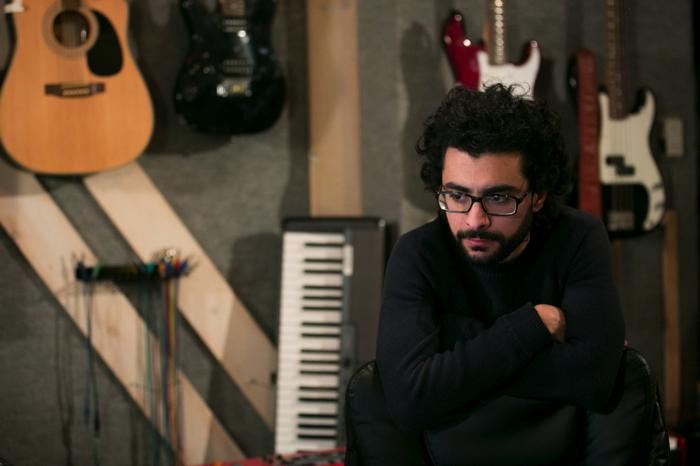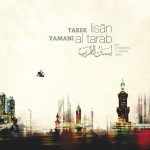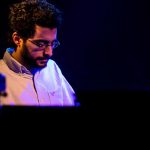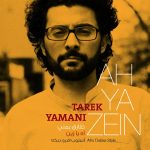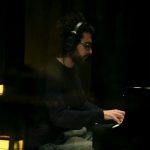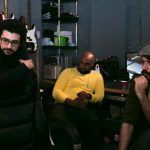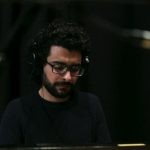The recent Nuqat conference in November revolved around acknowledging ‘The Missing Link’ that prevents a collective approach to the creative industry in the Middle East. People were offered the chance to attend lectures and participate in workshops hosted by some of the Middle East’s most creative minds. One such mind belongs to Tarek Yamani, award-winning composer, pianist and founder of “Beirut Speaks Jazz”. His latest album, Lisan Al Tarab: Jazz Conceptions in Classical Arabic, utilizes a fusion of traditional Arabic music and Jazz, contributing to a truly unique and hybridized sound. In this way, Yamani bridges not only the wide spaces between strict musical disciplines, but also the gap separating people from musical creativity.
Born in Beirut in 1980, Yamani’s successful career in music was no surprise. He was raised in a house full of music enthusiasts and his father’s love for a variety of musical styles certainly rubbed off on him. From rock to reggae, disco to classical, Arabic tarab (closely defined as traditional Arabic music, or music that inflicts an emotional response) to Indian, Yamani understood from a young age that music was versatile. Around 1990, he strayed from the academic, classical music route and decided that if he wanted to pursue a career in music, he would have to do it on his own terms.
How did your musical journey begin?
I always approached music in an independent way. After I left the national conservatory, I borrowed a guitar from my neighbor and taught myself to play it. I got very deep into rock and heavy metal music, and started a band with my friends from school. Eventually, I felt the need to return to the piano, but this time I started from scratch. I had a completely new attitude and I learned from the jazz masters themselves through the CDs I began collecting.
From the moment jazz took my interest, I had a dream to one day be able to capture the mystery behind this African-American innovation. I could never imagine how many years it would take me to achieve that. Everything revolved around decoding the language of jazz and although it was difficult to begin with, it was an incredible feeling every time a riddle was solved. I was addicted to it then and I‘m addicted to it now.
Is the final sound of a musical track an individual or group effort?
A musical track is a group effort in any kind of music, from through-composed pieces, to highly improvised jazz. In jazz there is no true repetition. The final sound is as adaptable, branched and team-worked as a discussion over dinner. It is practically impossible to reiterate the exact same emotions, gestures and words that appeared in that conversation.
How have audiences – and those in the Middle East in particular – reacted to your sound?
Playing piano solo is a very delicate experience, for both the performer and the audience. The performer is alone with their instrument and is responsible for channeling their energy into the audience, who in turn reflects it back. The audience plays a much bigger role in the course of the performance than in productions involving more than one musician.
Most of the concerts I played had unpredictable outcomes, as I was scheduling performances in cities not used to having jazz piano solo concerts such as Tunis, Alexandria and Beirut. However, the result was extremely pleasing and it denounced the misconception that Arab audiences do not want to get closer to jazz. It was an insightful experience from which I learned a lot.
In what ways do African-American jazz rhythms influence you and your music?
I’ve always had a peculiar attraction to African rhythms, so my main inspiration has always been music with its essence deriving from those specific roots. Jazz is at the top of the list, because to me there is absolutely no other music genre in which such a supreme balance is found between complex rhythms, beautiful melodies, sophisticated harmonies, and collective improvisation. Jazz is so rural yet urban, deep yet accessible, controlled yet free, instinctive yet mind-powered, and that somewhere within the groove lies the secret of the universe.
How have you shared your love of jazz through “Beirut Speaks Jazz”?
I founded the initiative in order to bring jazz closer to Lebanese people by inviting well-known artists from a variety of musical genres and have them sing in a jazz context. This helps spark new collaborative possibilities to ignite for the artists themselves and it will encourage fans of different musical genres to experience jazz in a whole new way. It will hopefully help them realize how free, elastic and limitless jazz is and how easily it can be embraced.
What inspired you to start working on Lisan Al Tarab?
I always wanted to adapt muwashahat to jazz but I never knew when the bell would ring. Two years after I released my first album Ashur, I was ready to go into the studio. In February 2014, I won a “Culture Resource” production grant so I immediately started preparing for the new record.
It was not the first time I explored the common grounds between jazz and Arabic music. Four years prior, I had implemented a dabke in a piano solo composition and Arabic sounding scales in the composition Ashur. However, it wasn’t until then that I decided to focus all those experimentations into one single project.
Did any other musicians join you on your journey towards completing the album?
I played with Greek bassist Petros Klampanis, whom I first met in Holland in 2007. Six years later we crossed paths in New York and ended up playing a concert together in 2013. His Greek heritage and position as a true jazz player made him very sensitive to Arabic music. He was soon playing muwashahat like he grew up listening to them.
American drummer John Davis, whom I met at a jam session in New York in 2011, also joined me. John plays the drums with certain fluidity and the way he assimilates rhythms like the dabke and the sama’i is incredible.
How did you manage to bridge the gap between jazz and Arabic music?
Music is a universal language just like breathing is a universal reflex. As much as each person is unique and considers himself “different,” there are all those universal aspects, which make us identical. When we forget about our differences we come together as one. It is the same with music and its subgenres. If we manage to find the universal aspects that govern two musical styles, bridging those styles together will become obvious by itself.
What is one of your greatest musical challenges at the moment?
The main challenge I face is the use of quarter tones. Quarter tones are half the chromatic step found on a piano and only appear in Arabic music. This makes my choices limited. For example, in Lisan Al Tarab, I only chose songs that don’t have quarter tones as it would have been impossible to play them on a well-tempered piano. However, there is a solution to everything and this challenge is what I’m planning to take on next.
To discover more about Tarek Yamani’s music and “Beirut Speaks Jazz” initiative, visit his webpage www.tarekyamani.com. You can also follow him on Twitter @tarek_yamani.
Photos courtesy of Jean Boutros, Lina Shteyn, Rebecca D’Angelo.

